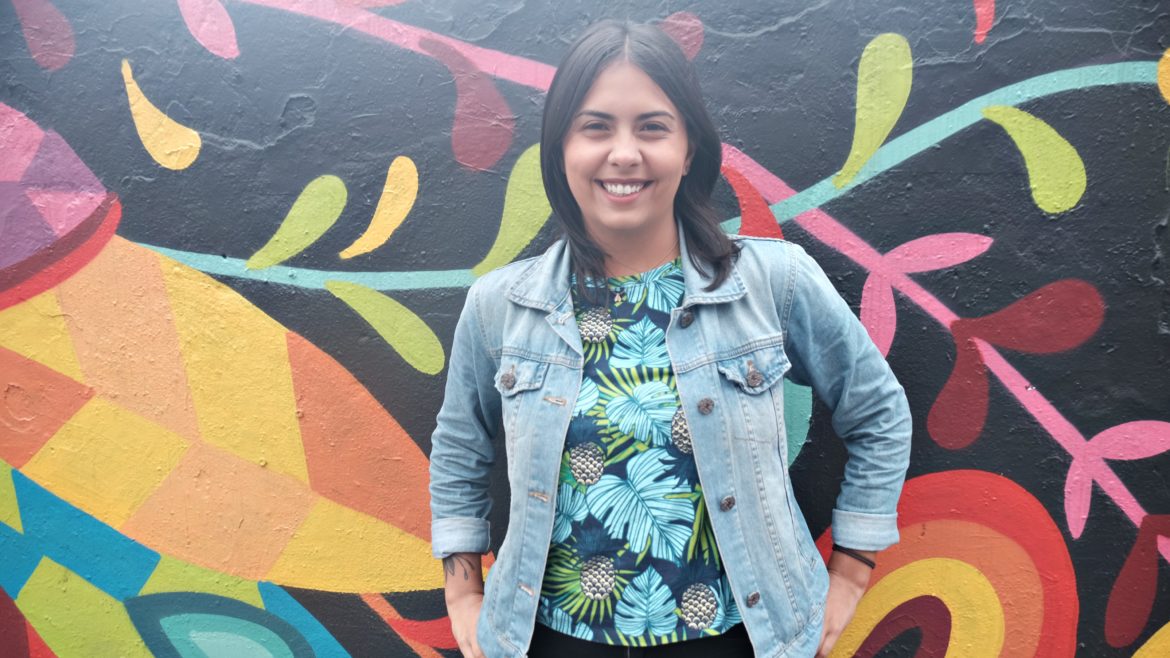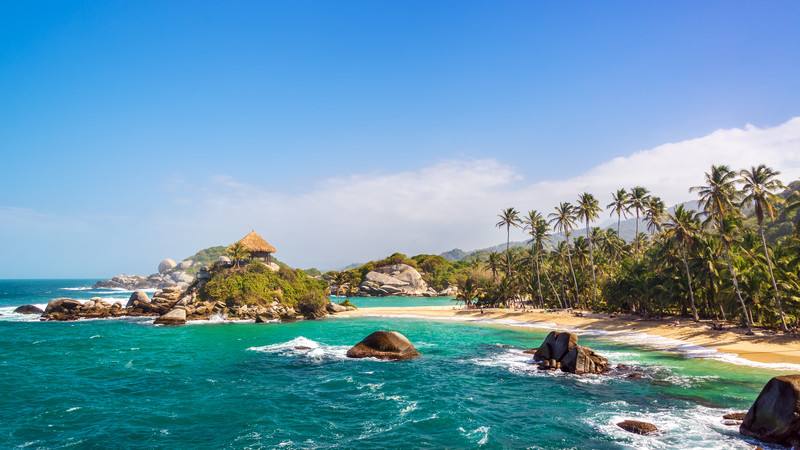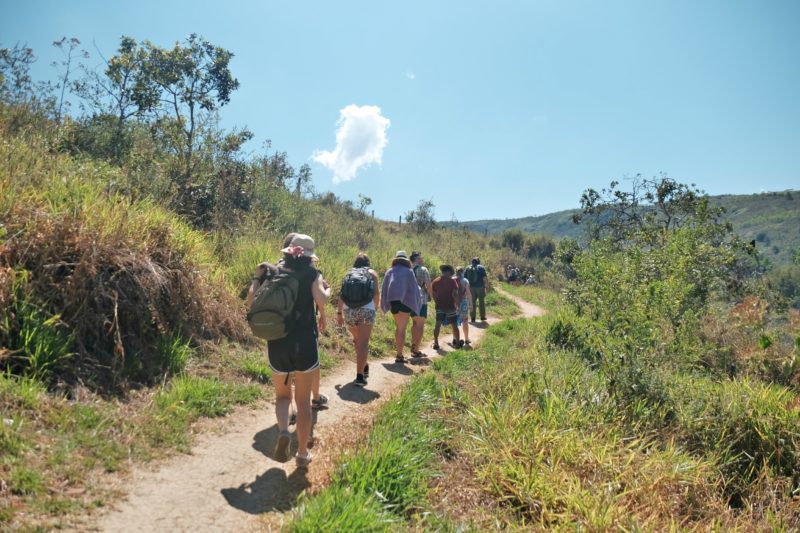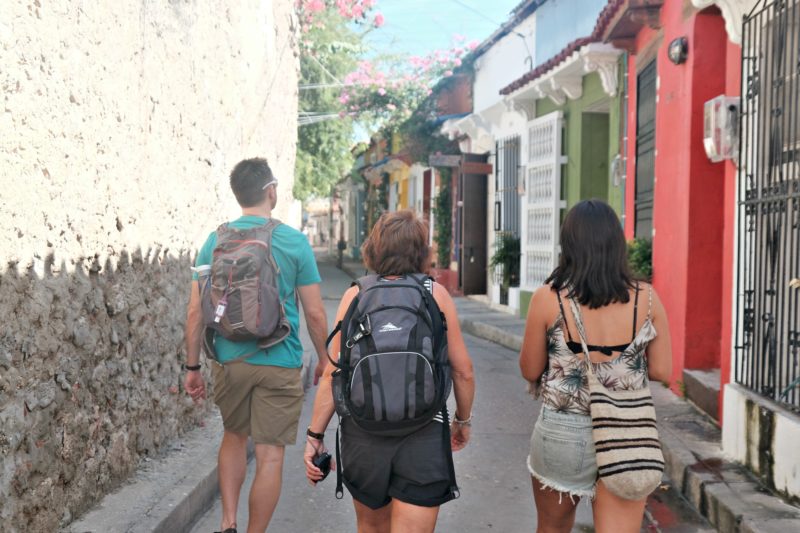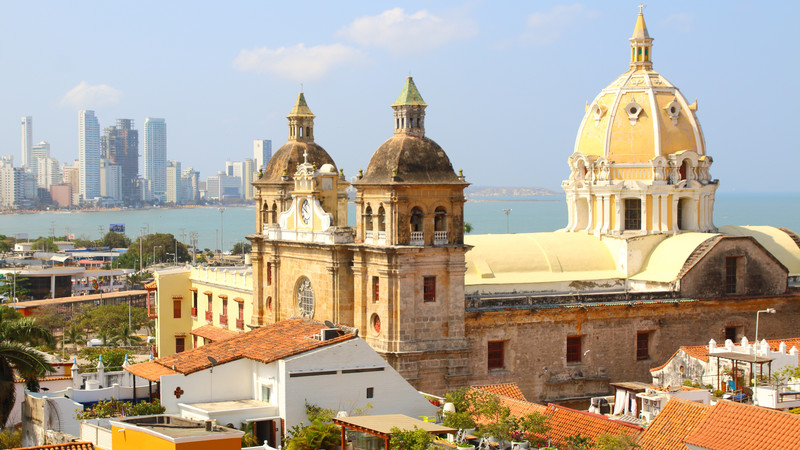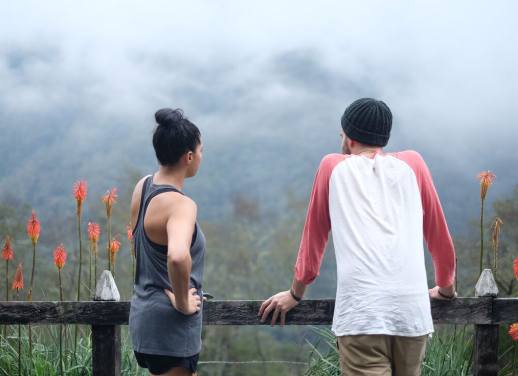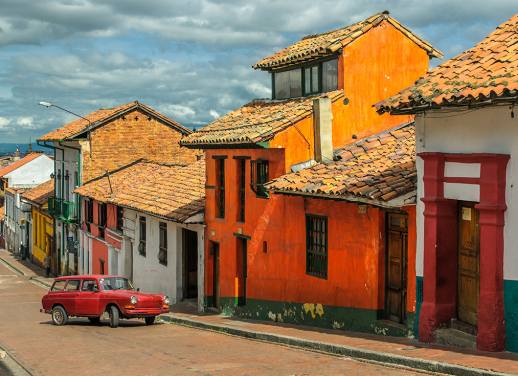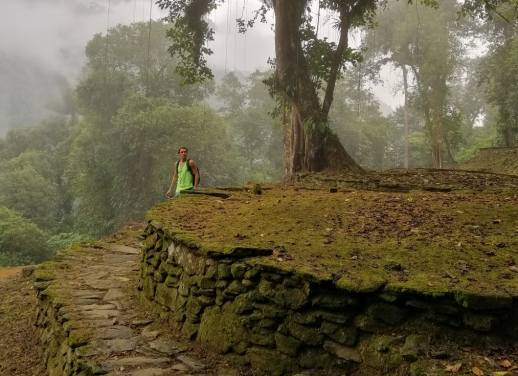“In my last group, a lady from the US was hiding the fact she was in Colombia from her grandmother,” Intrepid leader Carolina says to me. “She told me her grandmother would have a stroke if she knew!”
We laugh, and then go back to sipping our drinks. We’re at a restaurant she’s picked in the small Andean city of San Gil, halfway through Intrepid Travel’s 10-day Explore Colombia trip. But we’re not laughing at the absurdity of the American woman’s grandmother. We’re laughing sadly, laughing knowingly, because the anecdote is reflective of so many people’s opinions.
According to Carolina, at least one person in every tour she leads has a similar story. I think the reality might be higher. It seems that every traveller in my own group – from the couple from Washington DC to the teacher from Bermuda to the accountant from Ohio – faced their own challenges from friends and family about deciding to visit Colombia.
Carolina does not seek to dismiss or diminish her country’s past. But her stories from prior to the peace process sound like something out of another world and another time. She explains how her neighbours in Bogota were kidnapped, how domestic tourism was scarcely possible, how many in the countryside were forcibly displaced and how most had at least one relative killed by the guerrillas or paramilitaries. She even tells me that until 10 or 15 years ago, venturing to Tayrona National Park as a tourist was out of bounds. (The park – a paradise of lush jungle and rugged beaches our group had just spent a blissful day at – was a trip highlight for many of us, and is safe to visit now.)
READ MORE: 6 PLACES PROVING COLOMBIA IS SOUTH AMERICA’S MOST UNDERRATED DESTINATION
Painstakingly negotiated between 2012 and 2016, the peace process with FARC – in addition to the peace process with the paramilitaries – changed everything. Decades of armed conflict came to an end. Weapons were surrendered. The economy stabilised. Locals felt safe again. Visitors begun to trickle in. And slowly, so slowly, tourism begun to take off. Drawn in by fairytale colonial cities and by coffee plantations, by epic mountain ranges and by endless rainforests, intrepid travellers found endless things to love. So it’s not surprising some stats show that tourism to Colombia has grown over 250% since 2006 when one million visited the country.
And, honestly, this feels like just the beginning.
Carolina explains why much better than I can. At just 25, she’s emblematic of a new generation of Colombians, a generation with a completely different outlook. “The previous generations were scared all the time. If you speak to your dad, my dad, they are a lot more worried about travelling in Colombia because they remember the violence. But my generation aren’t scared,” she says. With wisdom beyond her years, she proves this by guiding us fearlessly from colourful Cartagena to bustling capital, Bogota, and everywhere in between. Thanks to her, we marvel at cobbled streets in colonial towns, we swim in swimming holes so beautiful they’re almost dreamlike, we hike through verdant canyons to sleepy mountain villages, and, more importantly, we learn about the country and its incredible people.
Moreover, we feel safe. No-one in my group of 12 has a single issue, and Carolina reassures me that that’s the norm. She’s only been a leader for one year but explains that “we’ve never had any security issues on our trips. There’s always at least one person who worries per group, but security concerns don’t relate to the conflict anymore, they just relate to staying in big towns and cities.” And she urges us, just as every other tourism professional we encounter does, to bring this message back to our respective countries. “What’s cool is that you can go back home and tell people ‘I’m alive and nothing happened!'” Carolina jokes.
Then she gets philosophical for a second and remarks that “the most important thing is that people don’t live in fear. Us Colombians had to learn that the hard way. You can’t be scared”. Maybe it’s this attitude that explains why all the locals we meet seem to be so joyous. Why they greet us so warmly. And why they leave us feeling like we have so much to learn from them about living life to the full. Though no-one teaches us this more so than Carolina, with her carefree attitude, ready laugh and passion for salsa dancing, art and music.
TO SEE THE TRIPS THAT CAROLINA LEADS, CHECK OUT INTREPID’S TOURS IN COLOMBIA
With a background in anthropology and social research, she’s just the sort of thoughtful leader you’d dream might show you around a new country. Everywhere we go, she points out her favourite restaurants (spoiler alert: they’re always amazing) and a self-described history and architecture nerd, she educates us on all the things we’d never find in guide books. She also tells me that, for many people on her trips, she’s their first female tour guide. (She doesn’t dwell on the difficulties this can create with local supplier and drivers – “they’re always mansplaining things to you!” – but focuses on the positives and how she can best represent her country.)
Carolina is also a sincere advocate for Intrepid Travel’s style of sustainable, authentic travel. “What’s really cool about belonging to this company is seeing firsthand the positives effects of tourism,” she says, giving the example of how guesthouse Villa Margarita has benefited from Intrepid visits. (This family-run posada, located near Tayrona’s jungle, proved a favourite stay among our group.) “The family have had the piece of land it’s built on for over 30 years, but the conflict meant it was too dangerous to do anything with,” she informs me. “Eventually, when the paramilitaries left in 2007, the family built a guesthouse they could rent out. The fact Intrepid takes people there has made a big difference for them financially; it means they can renovate and make it more comfortable, bigger.”
This is just one small instance, but it shows the potential tourism has to improve the daily lives of Colombians. After all, if there’s anything we learn on our tour, it’s that this country has the capacity to surprise and delight. Having started off concerned about safety and its dangerous reputation, my entire Intrepid group leave with only positive memories of its landscapes and cities, its people and culture.
Aside from the fact Colombia’s safe and ready to welcome visitors, I ask Carolina if she has any other parting messages. “Of course Colombia is completely underrated,” she exclaims. “There’s a lot of cool things to do. I don’t know what image people have of us but every time I have people in my groups, they’re always surprised.”
What she then says sticks with me as much as her beautiful country does. “Historically, Colombians have always wanted to be like Europeans and Americans. Those cultures are all over the media and the American Dream is a huge thing for us here. But working with this company makes me very proud to be Latin American. We’ve had such a rough history and I think people underestimate us, but I’m really proud of my roots.”
Finally, she says: “Every Intrepid group I have makes me more proud to be Colombian. Every single time I lead a tour I feel more proud.”
—
That’s why we run small group tours – to ensure they empower locals and provide travellers with authentic experiences.
To experience this for yourself, check out Intrepid Travel’s range of trips in Colombia.
—
(All images c/o Rebecca Shapiro and Intrepid Travel.)

